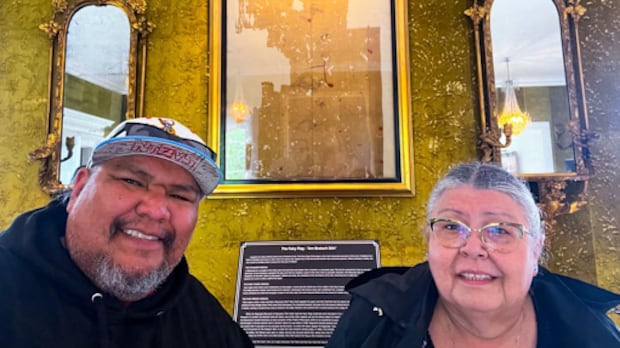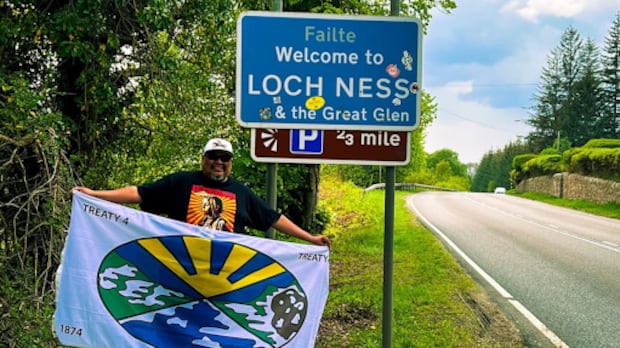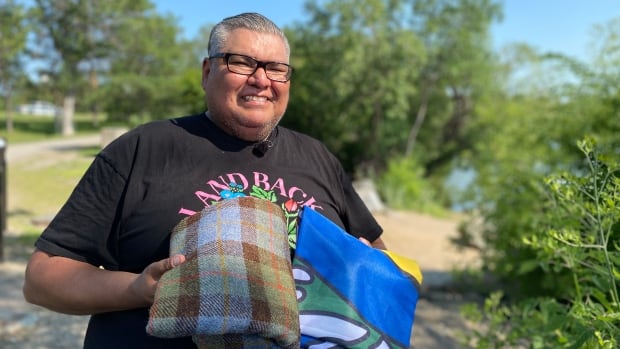
Cory Generoux was around 10 years old when he started asking questions about who his grandfather was.
“Growing up, I was always aware that my grandfather was a white guy and he wasn’t native,” said Cory. “So I began asking questions, like, what is grandpa? Is he Irish? Or like, what is he, you know? That’s when I learned that he was Scottish.”
On a recent trip to Scotland, Cory and his mother Wanda Wilson — who also have Cree, Saulteaux and Nakoda roots — had the opportunity to learn about their Scottish heritage. They planned the trip to visit all the places their ancestors lived.
Cory, who lives in Fort Qu’Appelle, Sask., about 75 kilometres northeast of Regina, said he carried papers proving his ancestry while he and his mother roamed Scotland.
“I’m a big brown guy in Scotland claiming to be Scottish, you know what I mean?” the 46-year-old said with a laugh.
Cory Generoux and his mother Wanda Wilson visited Scotland to learn about their Scottish heritage, stemming from Generoux’s grandfather (Wilson’s father), who immigrated to Canada from Scotland and married an Indigenous woman. “Part of my identity is having this Scottish heritage in me,” Generoux says.
On the trip, he found there were a lot of parallels between the experiences of his Indigenous ancestors and his Scottish ancestors, including his grandfather Bill Wilson, who died six years ago. Bill didn’t speak much about growing up in Scotland unless he was asked, Cory said.
“My grandfather never talked about what happened. His livelihood was taken away. His lands were taken away, his culture and his languages being crushed,” Cory said.
He said he learned that what happened to his Scottish ancestors and their culture was similar to what happened to Indigenous people here in Canada. They faced poverty, destitution, oppression and attempts to erase their culture.
“Sheep are worth more than what people were and my grandfather was affected by that. He didn’t want to be Scottish. He wanted to be Indian,” Cory said.
Cory learned that his ancestors’ Hebridean Gaelic culture was nature based and they believed that everything has a spirit. They even had medicine people.
“The healers would bring them into what they call a hot house, right? Then in a hot house they bring the rocks and splash into it like a sweat, exactly like our sweats,” Cory said.
How a Scottish man met a Cree woman
Cory said his grandmother Vicki (Vitaline) Wilson, née Wasacase, told him that when she was fresh out of Lebret Indian Residential school and with the sewing skills she learned from her time there, she went to work as a seamstress for fashion designers in Vancouver.
She also went to Vancouver to get away from the Prairies, where the government was removing Indigenous children from their homes and placing them in foster homes or putting them up for adoption, a practice known as the Sixties Scoop. His grandmother feared she would be taken away from her family again.
In Vancouver, she met Bill (William) Wilson, who was working as a fisherman. They had four daughters together, including Cory’s mother Wanda, and eventually moved back to Saskatchewan.
Wanda, 61, is from Kahkewistahaw First Nation but now lives in Wet’suwet’en, B.C. Cory is the oldest of her five children.
A phone call in 2016 sparked more interest in their Scottish background, when a man from Belgium called Wanda to let her know her great-grandfather William Wilson’s grave site in Passchendaele, Belgium, had never been visited.
Delving into the records
The search started with Scotland’s People, the official government source of genealogical data, which has historical records of the country’s lords and the people who lived on their lands.
Bill Lawson, a retired lawyer and genealogy expert living in Scotland, worked with Wanda and her father Bill to build their Scottish family tree.
“He had this mission in his life to save as much information and genealogy as he could,” Wanda said.
After other family members weren’t supportive of the research, Wanda wanted her children to know all the parts of who they are and not be ashamed.
“On my Indigenous side, they wouldn’t take the genealogy reports,” she said. “They didn’t want to be white and it was really hard for me to get excited because they started denying their genealogy, like their DNA, and I was really upset with that.”
Wanda and her father managed to figure out where her great-grandfather William Wilson lived, worked and died.
They discovered William was a soldier with the Argyll and Sutherland Highlanders, a unit of the Scottish Military. He died at Passchendaele in the First World War.
When Cory and his mother were planning their trip, they included a visit to Passchendaele to honour William.
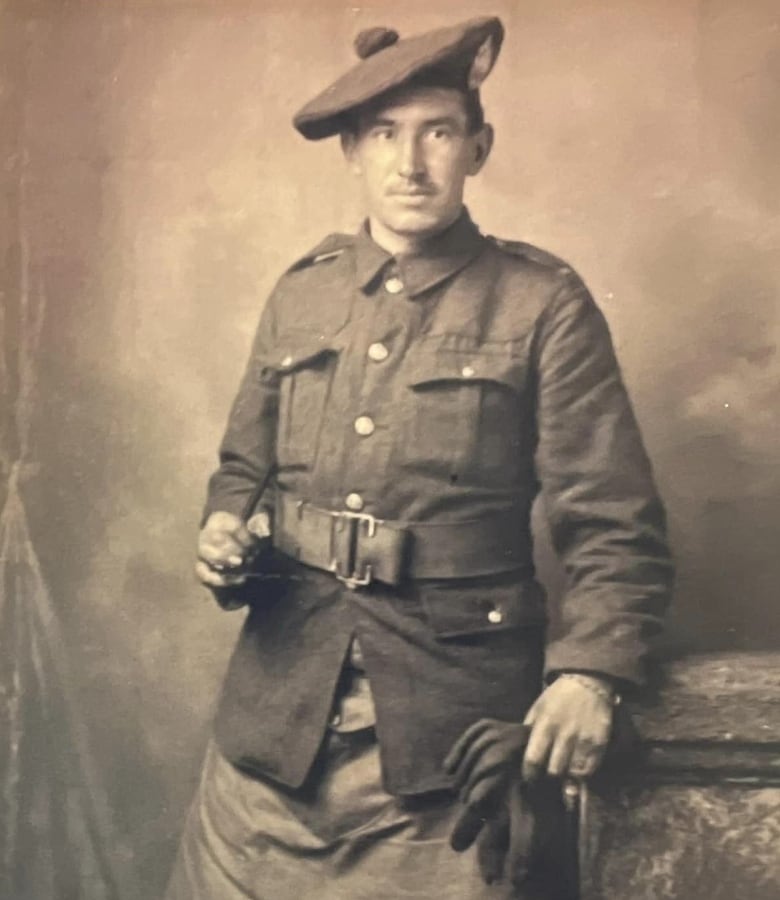
Many reconnections
The trip didn’t just give Cory and Wanda a chance to connect with their roots. They also connected with each other.
“Being with Cory meant so much because he was going through his own healing and as a mother and son, we had our healing to do too,” Wanda said.
“So it was like we had no choice but to reconnect. It was really good to do it that way because it was bigger than just what we were going through.”
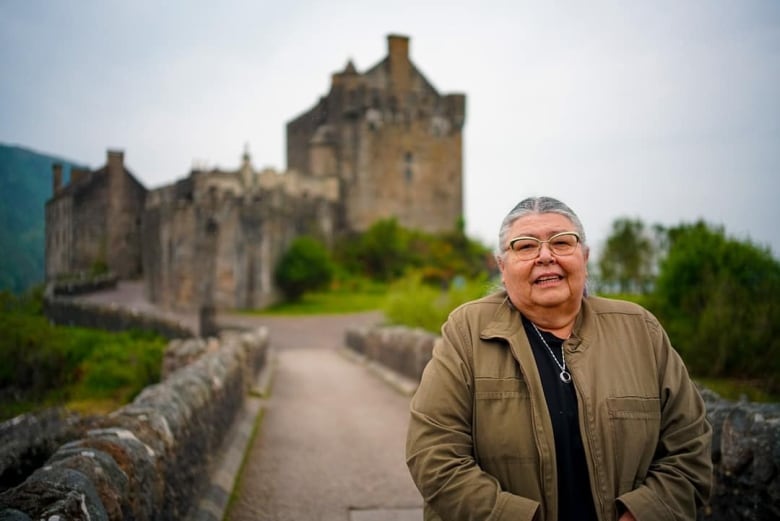
Cory recounted a stop they made in Scotland at Stirling Castle. While they were stopped for some rest on a “brutally” hot day, he overheard a guide talking about how that particular section of the castle is the spiritual home of the Argyll and Sutherland Highlanders, and it’s where they hold the swearing-in of new recruits.
He had a chance to talk to the guide and shared that his great-great-grandfather was a member of the 10th battalion of the Argyll and Sutherland Highlanders.
“She’s like, ‘Oh, welcome home,'” Cory said.
The guide told him that his great-great-grandfather would have been standing right where they were standing, and he would have walked up the steps and into a hall to swear his oath.
“No way,” Cory told the guide.
On a visit to a castle in Scotland, Cory Generoux and his mom found themselves on the very steps that their ancestor once stood on.
Cory had also learned that his family belongs to Clan MacLeod and hails from Harris, in the southern part of Scotland’s Outer Hebrides archipelago.
On a visit to Dunvegan Castle, they came across a Clan MacLeod registry book. Only those in the clan can sign it. Cory pulled out his papers and was also welcomed there.
“It felt so incredibly special to us. Not only are we there to explore our Scottish ancestry, but we’re being accepted.”
Wanda said she felt like she had been there before.
“I kept telling Cory, we are part of this land. This is us. We have an inherent right to this flag, this land’s blood is in our veins,” she said. “And when you think of that, you just walk more taller.”
“It became incredibly personal,” Cory said. “l know my Cree, Saulteaux and Nakoda ancestors, but … I really got to know my Scottish ancestors.”
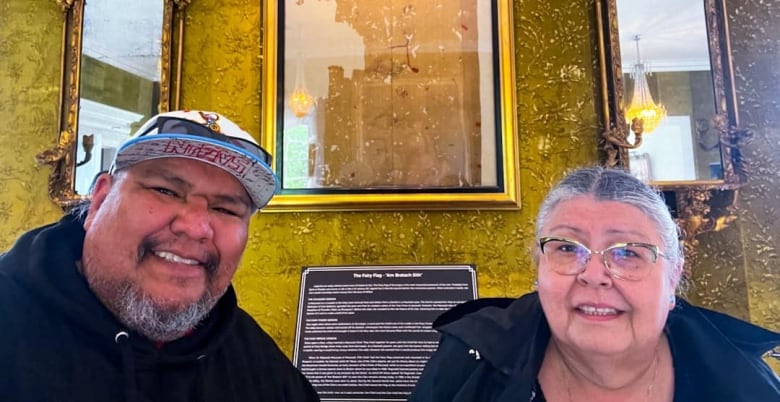
Embracing identity
Cory said that after his return, some of his friends and relatives have shared with them that they have Scottish blood as well.
He said there can be a stigma among Indigenous people about embracing their non-Indigenous side. He said it can feel like you have to be “more Indigenous” than the next person.
“I embraced that [Scottish] part of me from a very early age and it’s always been important to me, because one of the greatest influences in my life was my Scottish grandfather,” Cory said.
He said he knows many people are still discovering their Indigenous heritage through culture, lands, elders and language, and want to hold on to these parts of themselves.
“I think it just attributes back to the ripple of residential schools, where our identities were completely at war and we almost entirely lost our identity.”
But he wants Indigenous people to know it’s OK to accept all of who you are.
“People, they think that having any other blood in you is going to sully this experience,” he said.
“But to experience this life that we have, we have to embrace all the beauty that makes up who you are.”
